The figure ABCD is a square with side length a + b, and
it consists of the four congruent right-angled triangles and a square, EFGH,
with side length c.


This proof was devised by the Indian mathematician, Bhaskara, in 1150
AD.
Applications of Pythagoras' Theorem
To solve a word problem, read the problem and draw a diagram. Then
write the given information on the diagram and identify any right-angled
triangle(s). Use Pythagoras' Theorem to form an equation and solve
the equation thus obtained. Translate the solution into a worded
answer.
Example 1
A ship sails 80 km due east and then 18 km due north. How far is the
ship from its starting position when it completes this voyage?
Solution:
Let the distance of the ship from its starting point be x km. We
can draw a diagram of the ship's voyage on a set of axes, with the
horizontal axis representing east and the vertical axis representing
north. The ship is at the point P and it started at the origin.
There is a right angle at A.
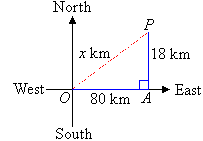
By Pythagoras' Theorem from triangle OAP,
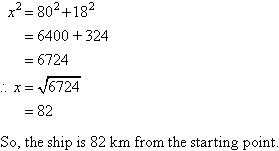
Example 2
A ladder 7.25 m long stands on level ground so that the top end of the
ladder just reaches the top of a wall 5 m high. How far is the foot of the
ladder from the wall?
Solution:
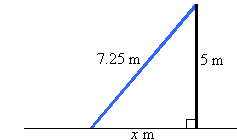
Let the distance from the foot of the ladder to the base of the wall be x m.
By Pythagoras' Theorem and the diagram,
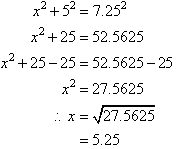
So, the distance from the foot of the ladder to the wall is 5.25 m.
Using a Construction Line
Sometimes we need to draw a construction line (shown as a broken line)
in the diagram to form a right-angled triangle.
Example 3
Use the information given in the following diagram to find the value of x.
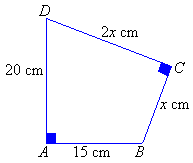
Solution:
Join BD by a broken line to form the right-angled triangles ABD and BCD. Let BD = y cm. |